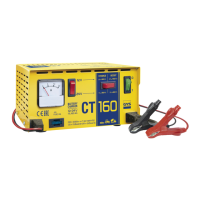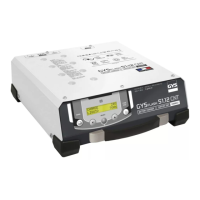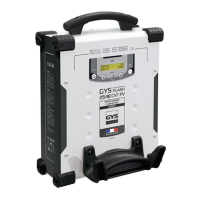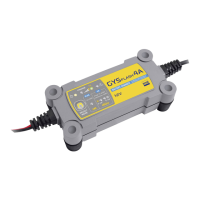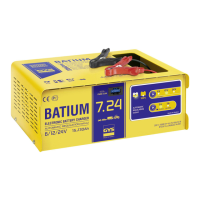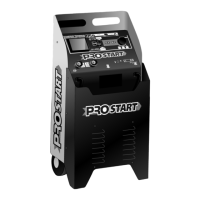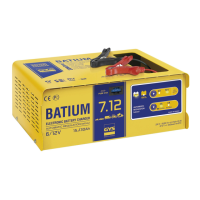4
Congratulations for the selection of this product which has been designed with great care. To get the best of it,
please read carefully following recommendations.
I - OPERATING MODE
All those models benefit of an “Automatic” charging mode, and possibly of a “manual “ charging mode.
Under “Automatic” mode, the charging process requires no supervision as an electronic card monitors the voltage
of the battery by stopping or starting the charging current according to the battery needs (W2 characteristic).
Once the battery is sufficiently charged, the “OK” light comes on. This light may go off and on again in order to
bring the battery to a maximum capacity (equalizing process).
This concept allows the charger to remain permanently connected to the battery and the mains without any risk.
Under “Manual” mode if existing, the charging process requires supervision by the user. This mode allows a
charge without voltage limitation to either charge sulphated batteries, or either fast charge a regular battery (for
a short period of time).
II - CHARGING INSTRUCTIONS
1- Use an indoor well ventilated premise.
2- Switch “off” the green interruptor and connect the mains supply plug to a 230 V with earth power supply
plug.
3- Remove the battery caps if available and check that the level of liquid is correct; if not, top up with
distilled water. Clean well the battery terminals.
4- Check that the battery capacity is in line with the charger capacity (number used in the charger’s name).
5- For the multi-voltage chargers, select 6V, 12V or 24V as required.
6- Connect the clamps (+ red, - black) to + and – battery terminals, making sure you get a good electric
contact.
7- Switch the green lighted interruptor to “ON”. Adjust the charging current by use of the “Slow-Fast” (or 3
positions) selector: The recommended charging current is 1/15 of the battery capacity (Ah). Above 1/10
of this capacity, the charging current is high and should be considered only for a short period of time.
8- After charging: disconnect first the plug before to remove the cable from the battery.
9- When charging process is over, switch “OFF” the green lighted interruptor BEFORE removing the battery
clamps.
III - NOTES
Starting
You should never start your car with a connected charger. You will destroy the fuse.
Problem
A fast charging current can create a problem :
- either the fuse will meld and charge will stop,
- or the light “OK” may switch “ON” and “OFF” without the battery being charged properly.
In this case, you have to select a slower charging current.
Thermal protection
The transformer of your charger is equipped with a heat sensor that switches “OFF” if heat goes too high. In this
case, make sure your charger is in a well ventilated area and wait for recovery (around ¼ hour).
Fuses
The fuses are a protection for your equipment against following occurrences :
- Polarity reverses connection or short circuit at the clamps,
- Start of vehicle with charger connected,
- Over charging current.
In case of fuse breakage, disconnect the charger, change the fuse with a fuse of
same value
and start charging
operations again.
